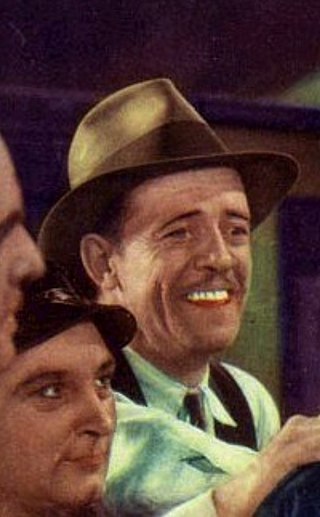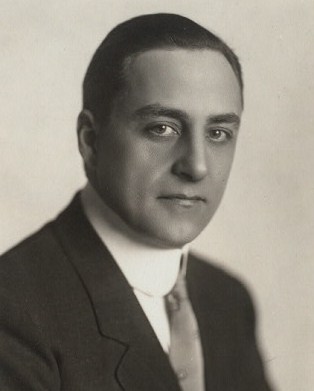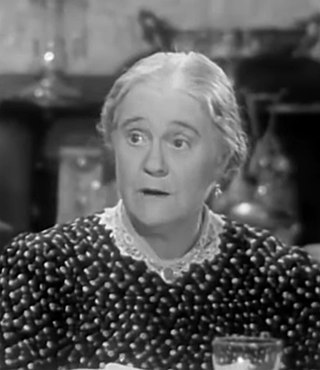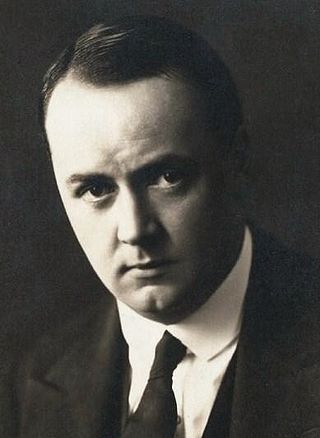
Tom London was an American actor who played frequently in B-Westerns. According to The Guinness Book of Movie Records, London is credited with appearing in the most films in the history of Hollywood, according to the 2001 book Film Facts, which says that the performer who played in the most films was "Tom London, who made his first of over 2,000 appearances in The Great Train Robbery, 1903. He used his birth name in films until 1924.

Orry-Kelly was the professional name of Orry George Kelly, an Australian-American Hollywood costume designer. Until being overtaken by Catherine Martin in 2014, he was the most prolific Australian-born Oscar winner, having won three Academy Awards for Best Costume Design.

George S. Barnes, A.S.C. was an American cinematographer active from the era of silent films to the early 1950s.

Edwin Maxwell was an Irish character actor in Hollywood movies of the 1930s and 1940s, frequently cast as businessmen and shysters, though often ones with a pompous or dignified bearing. Prior to that, he was an actor on the Broadway stage and a director of plays.

Arthur Edeson, A.S.C. was an American cinematographer. Born in New York City, his career ran from the formative years of the film industry in New York, through the silent era in Hollywood, and the sound era there in the 1930s and 1940s. His work included many landmarks in film history, including The Thief of Bagdad (1924), All Quiet on the Western Front (1930), Frankenstein (1931), The Maltese Falcon (1941), and Casablanca (1942).
Sidney Barnett Hickox, A.S.C. was an American film and television cinematographer.

Luis Alberni was a Spanish-born American character actor of stage and films.

Joseph Henry Kolker was an American stage and film actor and director.

Frank Reicher was a German-born American actor, director and producer. He is best known for playing Captain Englehorn in the 1933 film King Kong.

Wheeler Oakman was an American film actor.

Mary Gordon was a Scottish actress who mainly played housekeepers and mothers, most notably the landlady Mrs. Hudson in the Sherlock Holmes series of movies of the 1940s starring Basil Rathbone and Nigel Bruce. Her body of work included nearly 300 films between 1925 and 1950.

Samuel Bischoff was an American film producer who was responsible for more than 400 full-length films, two-reel comedies, and serials between 1922 and 1964.

John Miljan was an American actor. He appeared in more than 200 films between 1924 and 1958.

Edgar Warren Hymer was an American theatre and film actor.
Forrester Harvey was an Irish film actor.
Fred Niblo Jr. was a successful American screenwriter. He was nominated for an Academy Award for Best Adapted Screenplay for the film The Criminal Code (1931) together with Seton I. Miller. Niblo retired from films in 1950 to become a businessman.

Ethel Griffies was a British actress. She is remembered for portraying the ornithologist Mrs. Bundy in Alfred Hitchcock's classic The Birds (1963). She appeared in stage roles in her native England and in the United States, and had featured roles in around 100 motion pictures. Griffies was one of the oldest working actors in the English-speaking theatre at the time of her death at 97 years old. She acted alongside such stars as May Whitty, Ellen Terry, and Anna Neagle.

Paul Porcasi was an Italian actor. He appeared in more than 140 films from 1917 to 1945.

Charles Pearce Coleman was an Australian-born American character actor of the silent and sound film eras.

John Hugh Elliott was an American actor who appeared on Broadway and in over 300 films during his career. He worked sporadically during the silent film era, but with the advent of sound his career took off, where he worked constantly for 25 years, finding a particular niche in "B" westerns.
This page is based on this
Wikipedia article Text is available under the
CC BY-SA 4.0 license; additional terms may apply.
Images, videos and audio are available under their respective licenses.

















